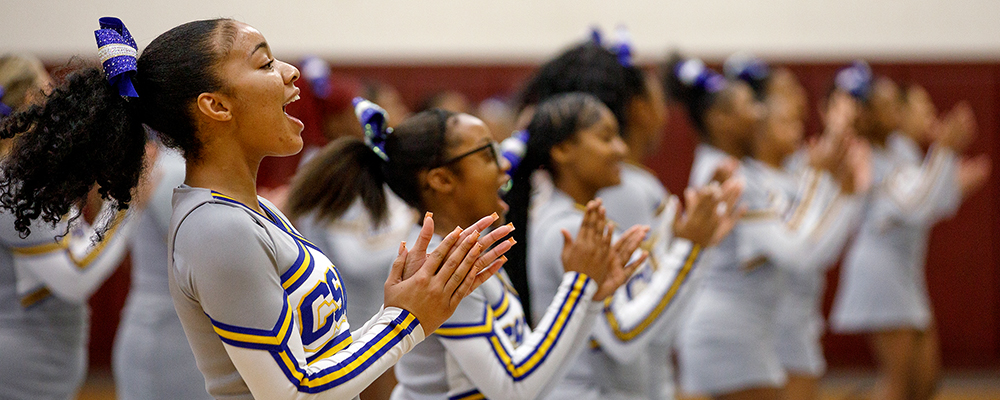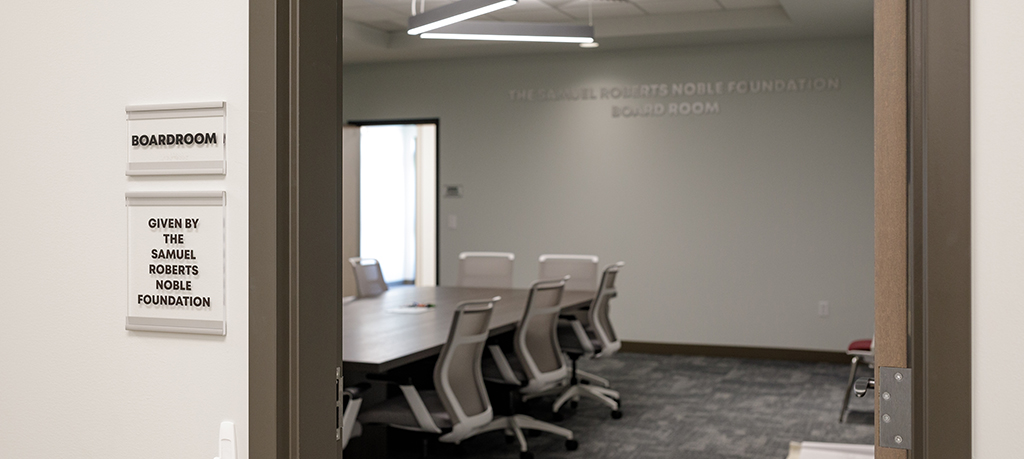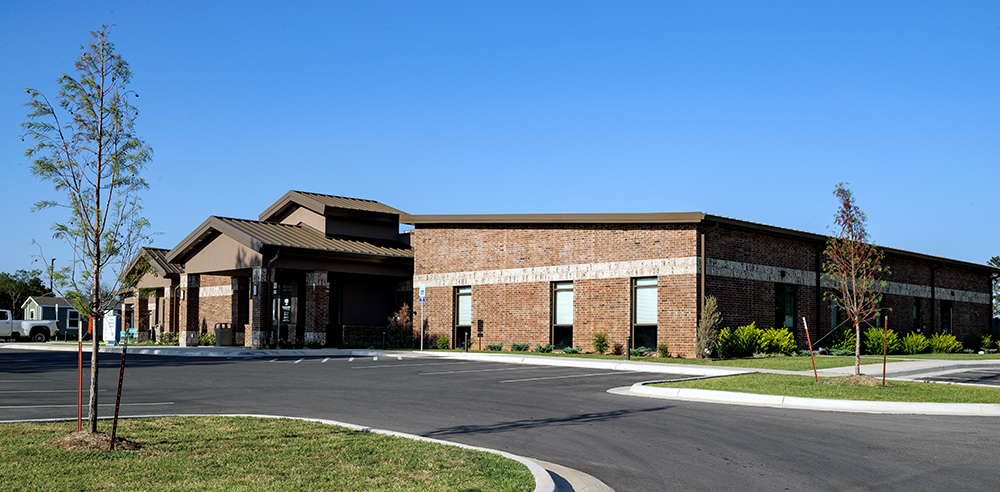

Most rural parts of the United States lack sufficient services for homeless or at-risk youth. Shelters focused especially on youth intervention are rare but not non-existent in rural Oklahoma. Community Youth Services of Southern Oklahoma (CYS) offers rural youth more than a safe space to sleep: they offer healing, hope, and humanity to kids and teens in need.
An environment that creates a feeling of safety for kids who have experienced trauma is often tough to come by for rural youth. Kids with trauma may have fears which cannot be reasoned away, meaning caregivers must provide physical safety as well as emotional safety. Kaylyn Weldon-Gary uses the term “felt safety” to define the space her team creates for the youth at CYS.

Weldon-Gary is the executive director at CYS and a mental health counselor certified in several therapy interventions focused on youth. She’s passionate about helping teens with a history of trauma overcome their experiences.
“When I started as clinical director in 2017, the program was very small,” explains Weldon-Gary. “The way we began to expand our service was through grant writing to access staff training in research-driven interventions. Before that, most of these interventions were unavailable to teens in southern Oklahoma.”
Through grants, Weldon-Gary gave her clinical staff access to training on research-backed interventions like Trust-Based Relational Intervention, often shortened to TBRI. It’s an intervention that focuses on three pillars: developing physical and environmental safety, establishing healing relationships, and teaching self-management and coping skills. This intervention helps both the caregiver and child learn healthy ways of interacting, so both can play a role in the healing process.
Since equipping her team with these educational resources, Weldon-Gary has seen an improvement in the behavioral outcomes of the children living in the residential shelter. They’ve also seen an uptick in referrals for both their residential program and their counseling services.
To put data to it, Weldon-Gary says the agency saw a dramatic increase in the number of kids living at CYS since November 2023. They also saw an increase in other services. “I was trying to run some rough numbers the other day, it was coming out as close to 800 kids we’ve helped between counseling, the clothing closet, school supplies closet and our food pantry. We impact hundreds of families each year.”
It’s estimated that urban and rural youth experience homelessness in similar numbers, yet rural youth have access to fewer shelters and services than children who live in urban areas. While accurately assessing the number of homeless youth in Oklahoma remains challenging, it is evident that there are youth in Southern Oklahoma facing homelessness. CYS has observed a growing demand and remains committed to providing shelter daily to those in need
To continue bringing these valuable services to southern Oklahoma, Weldon-Gary knew their facility needed to expand, both in size and scope. In 2019, just months before the COVID pandemic, the agency soft-launched a campaign that would double the size of their residential facility, expand space for counseling sessions and include a dedicated learning center for parenting classes and It’s My Life juvenile intervention sessions.

The Samuel Roberts Noble Foundation supports CYS’s mission and contributed to their capital campaign to build a brand-new facility in Ardmore.
“We wanted to support Community Youth Services’ effort to build their new campus, centered on trauma-informed care. CYS serves as a beacon of hope for vulnerable youth in southern Oklahoma,” said Stacy Newman, director of philanthropy of the Noble Foundation. “Together, we can empower these young lives, ensuring they have the resources and sanctuary essential for them to conquer challenges and thrive for generations to come.”
Weldon-Gary knew they couldn’t let the campaign momentum slow down during COVID; it was a time when CYS needed more space and resources than before. “We went through 2020 writing grants [for the campaign], but we picked up a lot of steam in 2021,” she said.
The agency broke ground in the fall of 2022 and by Thanksgiving of 2023, Weldon-Gary, her team, and their youth residents moved into the new space. Weldon-Gary’s favorite part of the new 16,000-square-foot-space is the feeling the new waiting room provides for clients and their families.
When you walk into the building, there’s now a spacious waiting room with a restroom, a corner with toys for when siblings are in tow and wi-fi, Weldon-Gary said. Instead of waiting in their cars, the grownups now enjoy 60 minutes of peace and quiet to scroll, read, or just relax while their child is with a counselor.
“It’s my favorite thing, which may sound silly, but it makes the whole agency feel more welcoming and more professional,” said Weldon-Gary.

Beyond the waiting room, the clinical offices and residential space expanded, too. On the clinical side, the waiting room leads to a hallway with several counselor offices, now large enough to accommodate a grown up or two, when that’s needed, and a closet space where counselors can store equipment used during specific therapy interventions.
The residential space received a larger kitchen, larger recreational space, and larger bedrooms. In the old building, the five bedrooms were smaller than two teenage boys could share comfortably and safely. But that’s all changed. In the new facility, the bedrooms were intentionally built bigger, and the number of rooms doubled from five to ten.
“Typically, we were capped out at five or six teenagers. But now we’ve doubled the number of rooms we have, from five to ten, and we’ve expanded those rooms so two people, two teenage boys, can comfortably share their room without being in each other’s space,” Weldon-Gray said. They also separated the sleeping area into two wings of five bedrooms each to better serve boys and girls without the challenges that stem from teens living in tight quarters.
With more space comes more “felt safety,” according to Weldon-Gary. A term she uses frequently, suggesting its importance to the healing process for kids at CYS. Felt safety is the first step kids need to begin building healthy relationships with staff and counselors and navigate their healing journey.
“We added a fenced-in private backyard for the kids that live here and it’s large enough that they can play football, catch, they can run around, and there’s also a covered patio,” describes Weldon-Gary of the new outdoor recreation space. “There’s a lot of space where our kids can go outside because we know that children with a history of trauma need physical activity to regulate their bodies. They need a lot more physical activity to keep their body feeling healthy and normal and regulated.”
Weldon-Gary explains that childhood trauma affects how kids adapt to their surroundings. The term “regulated” simply suggests how someone should feel at that moment given their environment. For example, a regulated body about to enter a basketball game would feel energized and have some adrenaline pumping. But at bedtime, your heart rate, blood pressure and respiration should all exhibit calmness.

CYS is leading the way in youth interventions in southern Oklahoma, and other shelters and counseling services are following the path. That’s good news for a community with a growing need for compassionate youth services.
Weldon-Gary admits the work is emotional, often tears are shed by someone in the building on any given day. The heartache is worth it to Weldon-Gary and her team. “I will say that there are good days and bad days, and the good days far outweigh the bad days.”
Stay up to date on all the ways the Noble Foundation is helping address agricultural challenges and supporting causes that cultivate good health, support education and build stronger communities.